Now open for entries, the 8th Annual A+Awards is celebrating the Future of Architecture, giving global recognition to forward-thinking designers forging new solutions for our evolving world. As part of the program, the “Future of Architecture” editorial series will highlight the growing trends that will help shape the built environment in the new decade. Enter the A+Awards now to be considered for upcoming coverage.
Sidewalk Labs, Alphabet Inc.’s urban innovation organization and the force behind Sidewalk Toronto, has been developing a new generative design tool that will help planners develop optimized city layouts and identify options that best reflect local priorities. This is an effort to bridge the gap between various experts on planning teams, such as architects, engineers, and real estate developers, who all conduct separate analyses to produce neighborhood design.
Currently, according to Sidewalk Labs, “The time and cost needed to coordinate all these competing elements often means a project can only afford to develop a handful of designs for the project team, with limited insight into how these options will impact the community.” Through machine learning and computational design, the tool will help planners develop countless comprehensive planning scenarios. It will also help evaluate the impacts of these scenarios on key quality-of-life measures.
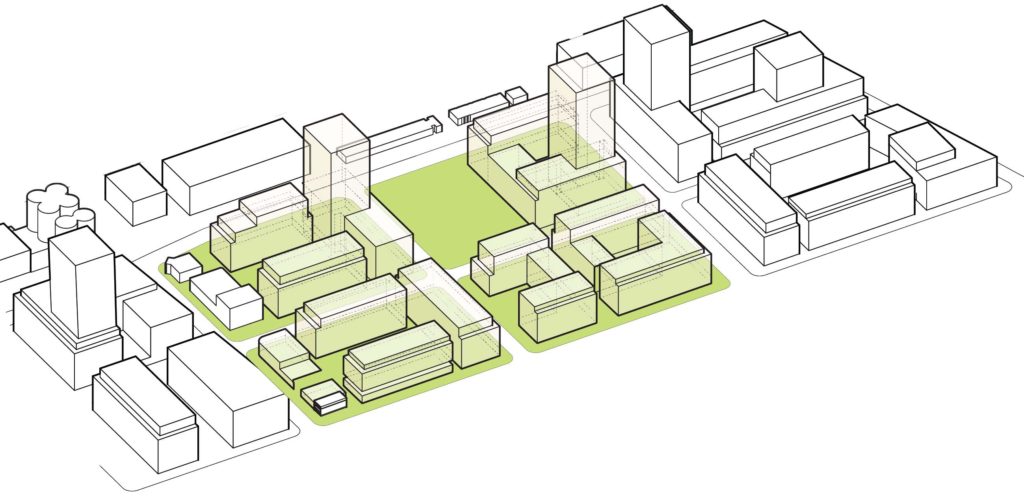
The baseline development or an area’s existing planning framework
Starting from a baseline design with information, such as geographic area and existing development plans, the tool is fed certain inputs or data that’s commonly used by engineers, architects, and developers to help plan a neighborhood. This inputs, include street layouts, block orientations, real estate economics, weather patterns, and building heights, to name a few. With this information, the tool generates a series of possible scenarios, along with their expected performance, for planners to consider using or refining.
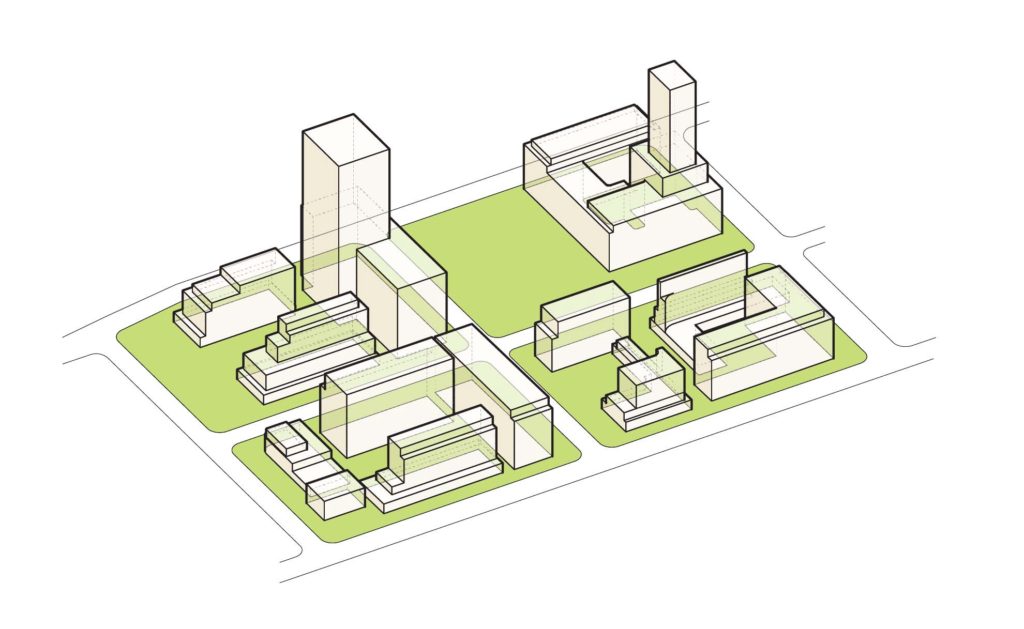
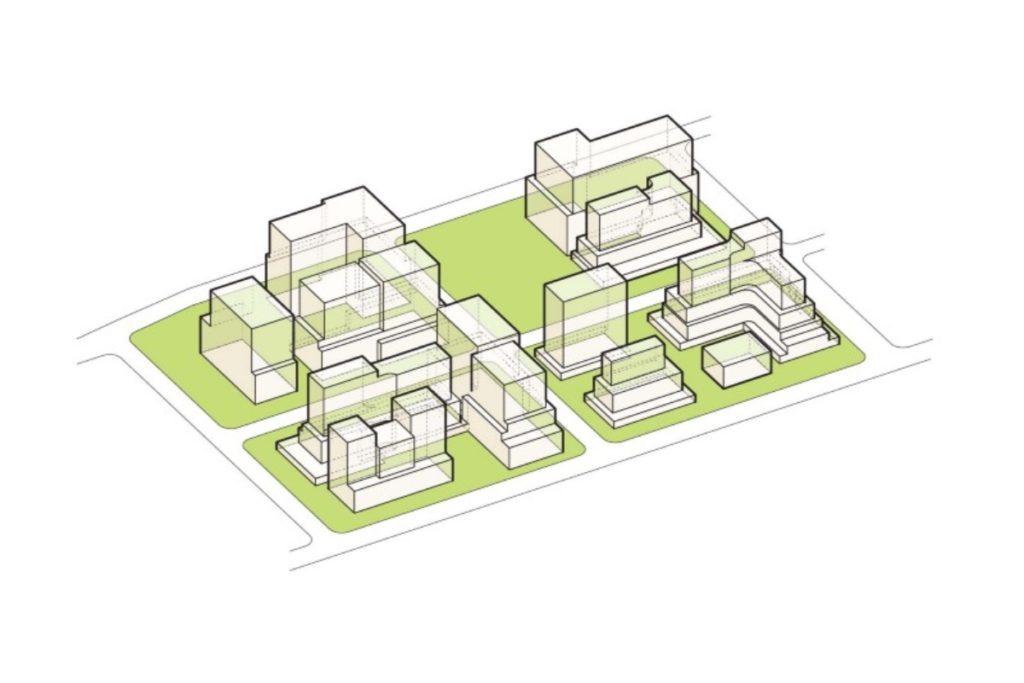
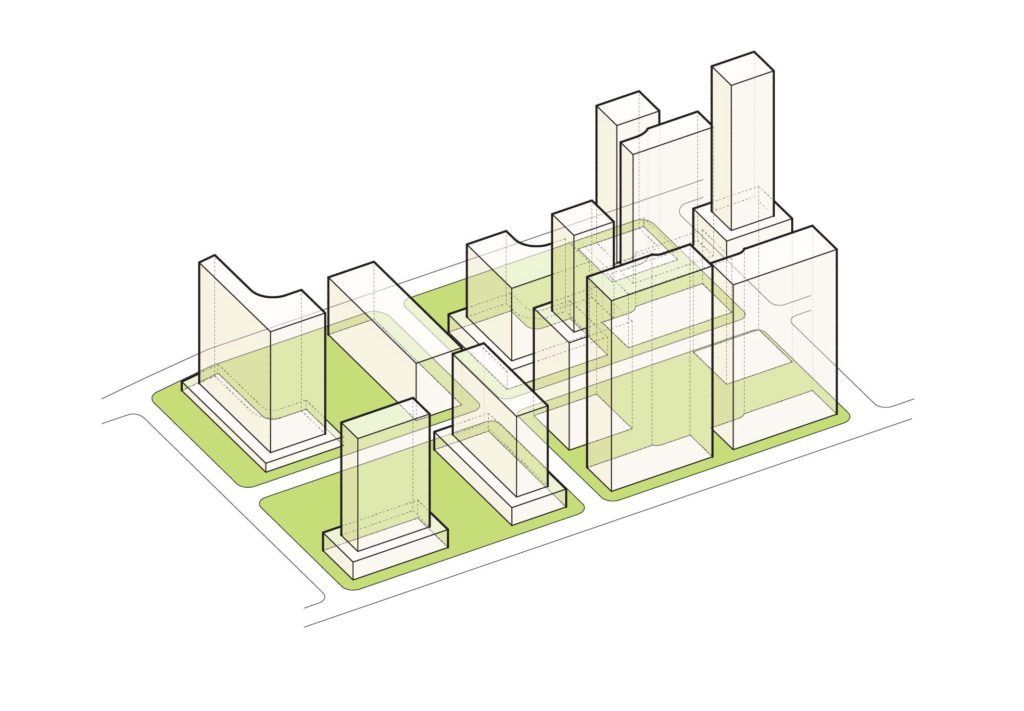
Generative designs #00530, #00469, and #01140; images via Sidewalk Labs
Despite fears spawned from this and the emergence of generative design tools as a whole, Sidewalk Labs’ system isn’t meant to automate the urban planning process or eliminate human-driven design. Instead, it seeks to make the design process more efficient and holistic, helping individuals make the most informed decisions possible.
While Sidewalk Labs is employing generative design for urban planning, similar processes have been present throughout the AEC industry. For example, aircraft manufacturer Airbus has used generative design to optimize the tail and wings of their aircraft. They’ve also utilized the technology to design a “factory of the future”.
Faced with an awkward, triangular site, the design team identified 10 constraints for evaluation by a generative design system, with some weighted more heavily than others, such as efficiency and cost. After the generative design system had scored hundreds of variations based on these factors, the design team picked out two of the most promising layouts, which they are currently exploring: One is a bigger building with an unconventional footprint, while the other includes the same factory elements optimized to fit into a smaller, rectangular footprint.
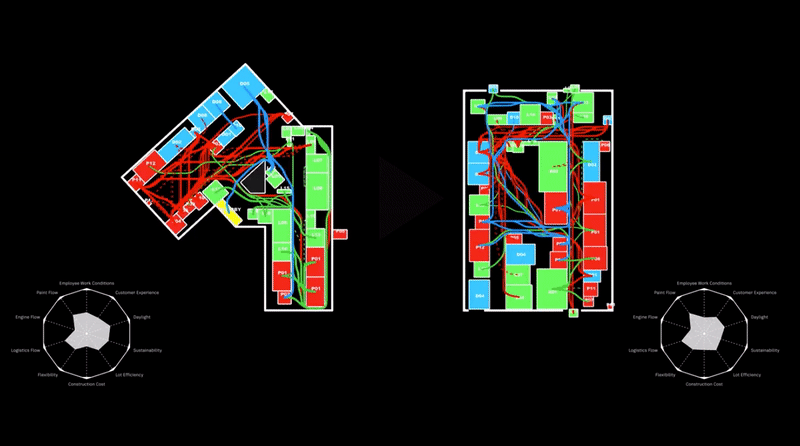
Airbus factory layouts analyzed by the generative design system; video courtesy Autodesk
On a smaller scale, architecture studio Wallgren Arkitekter and Swedish construction company BOX Bygg are currently collaborating to create a generative design tool that seeks to help architects understand potential site limitations in the early stages of the design process. Named Finch, the tool will allow users to input data regarding building sizes and local planning regulations to create optimal internal plans.
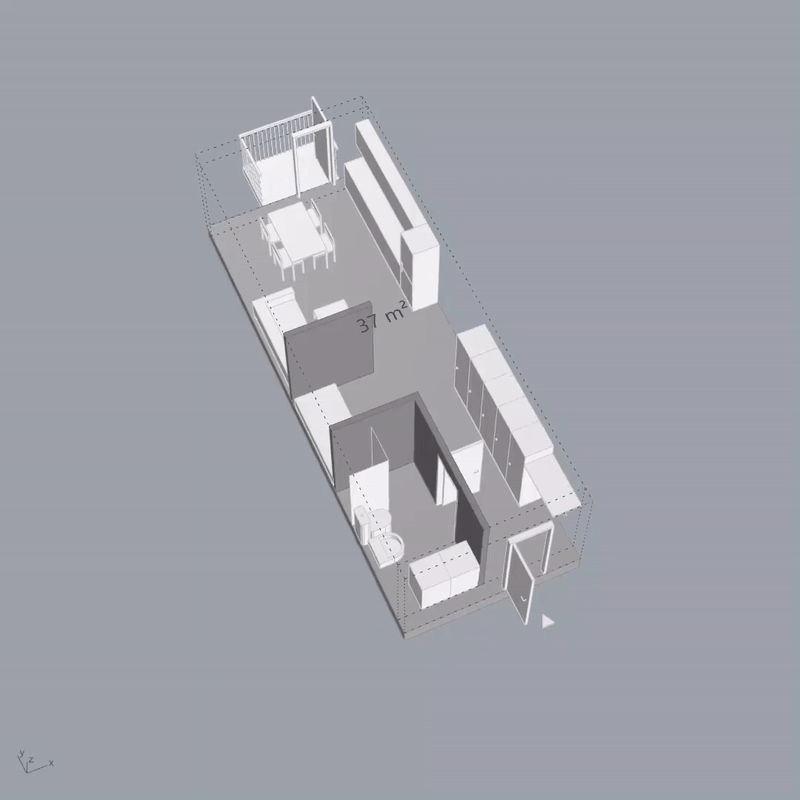
Generative design tool, Finch; video courtesy Finch3D
On the one hand, the potential benefits of generative design are endless. Using the power of computation, designers can explore countless design solutions at an instant. But this just the tip of the iceberg: Now at the scale of urban planning, this technology is growing in its capabilities and overall influence. With its ability to get smarter with time, it will be exciting to see how generative design tools continue to develop.
Whether you utilize generative design or another innovative creative process, we can’t wait to see the forward-looking projects you enter for this year’s A+Awards. Submit your works for the program before February 14th to secure your Early Entry Discount. Good luck from the whole team at Architizer!
Architects: Showcase your next project through Architizer and sign up for our inspirational newsletter.
The post The Future of Architecture: How Generative Design Will Change Cities Forever appeared first on Journal.

Комментариев нет:
Отправить комментарий